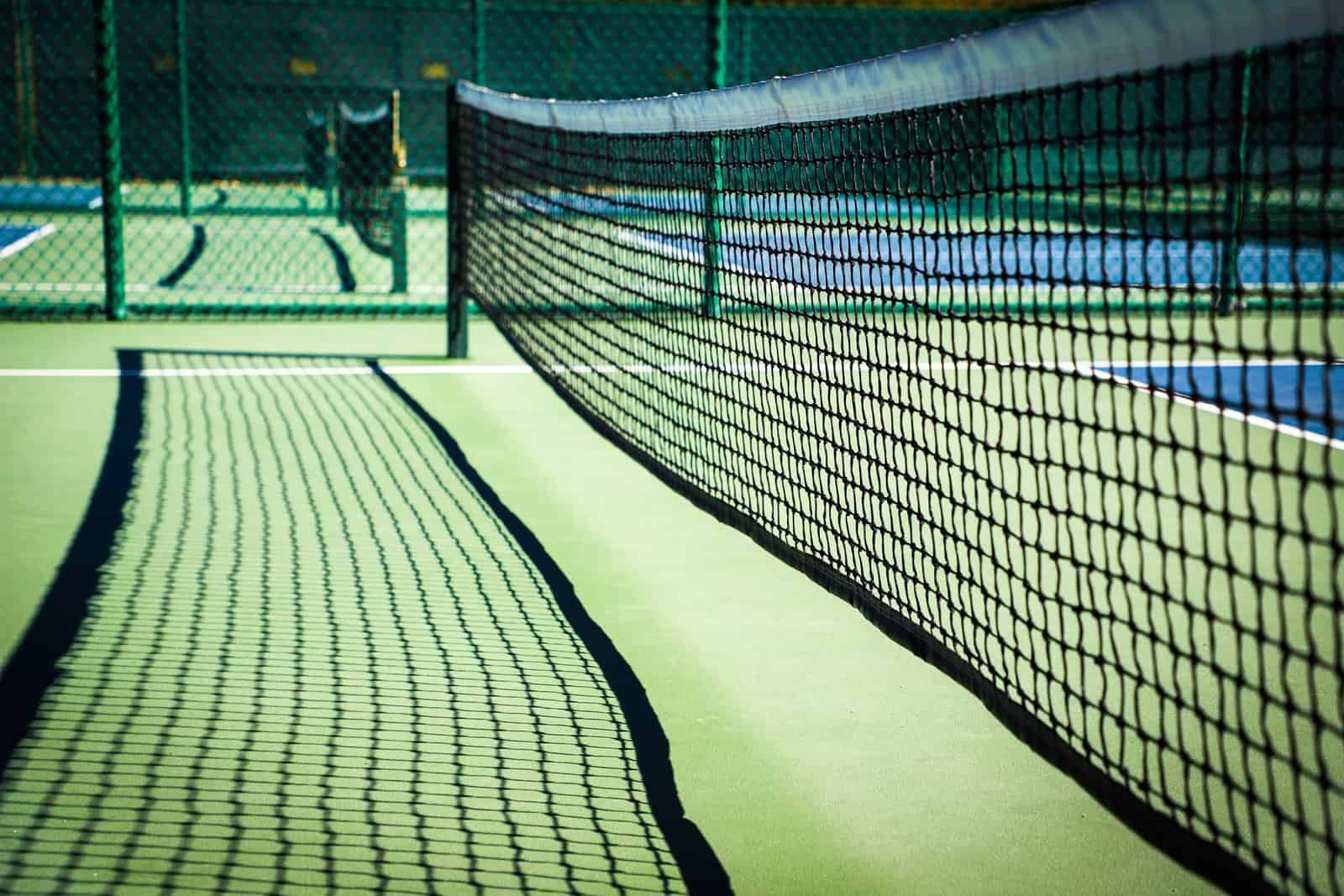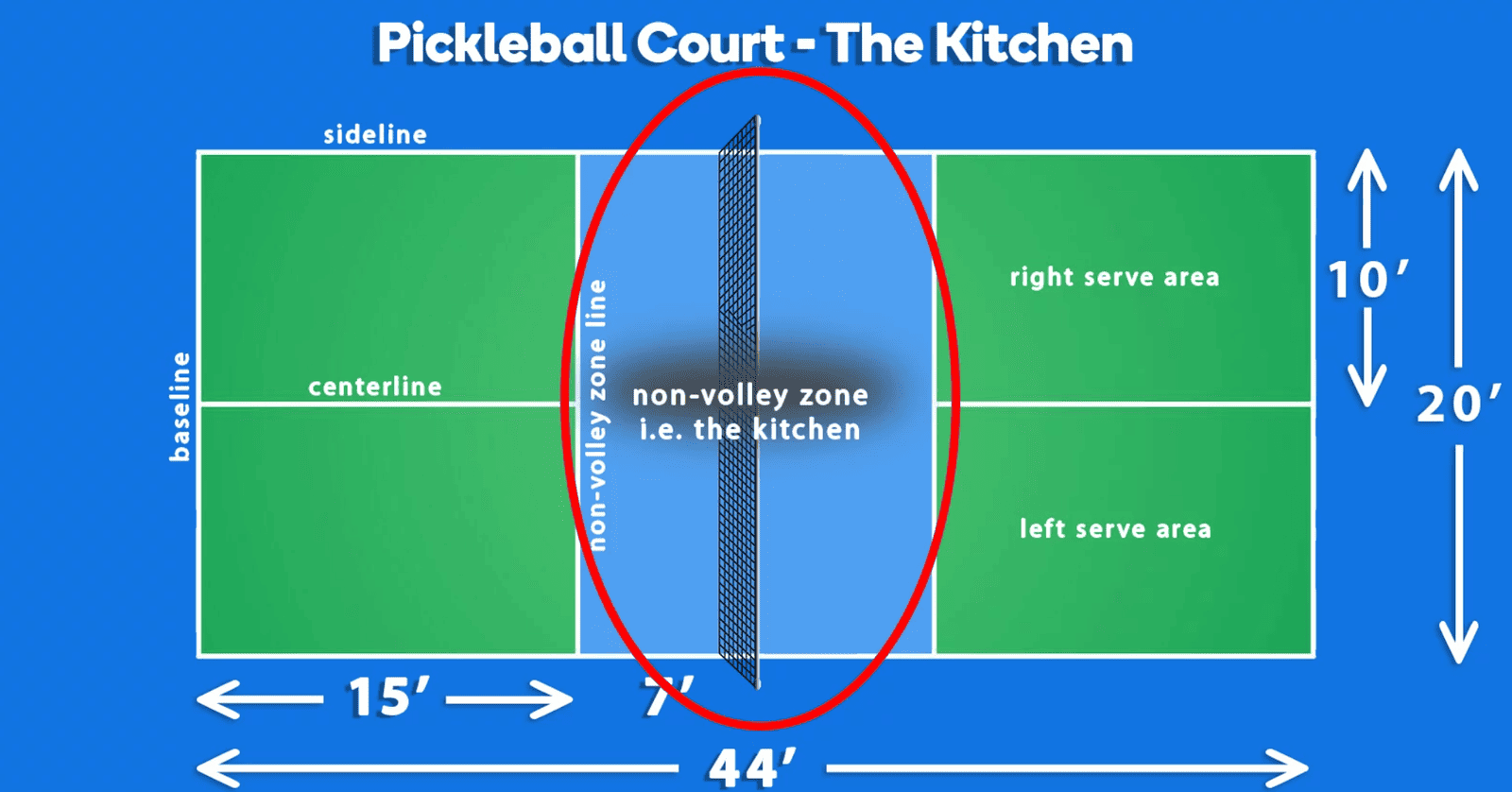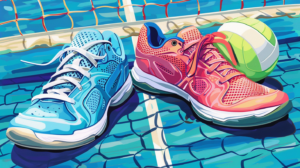How Big Is The Kitchen In Pickleball?
Last updated

Are you stepping into the world of pickleball and wondering, “How big is the kitchen in pickleball?” This question isn’t just for the curious; it’s a vital piece of knowledge that can make or break your game.
The kitchen, a term that sounds homey and harmless, is a zone of intense strategy and skill in pickleball.
Knowing its exact dimensions is crucial, as even a single wrong step can lead to a fault, turning the game’s tide. Let’s unravel this mystery and give you the edge on the court.
How Big Is The Kitchen in short
In pickleball, the “kitchen” or non-volley zone is a key area 7 feet from the net on each side of the court. This 14-foot stretch, the same width as the 20-foot court, is unique to pickleball.
Players can’t volley directly from this zone, balancing aggressive and defensive play. This rule adds a tactical element to the game, combining physical skill and strategy.
What Is The Kitchen In Pickleball?
The kitchen in pickleball, formally known as the non-volley zone, is a specific area on the court where certain restrictions apply. This zone, extending 7 feet from the net on both sides, is critical to the pickleball strategy.
Players are prohibited from performing a volley or hitting the ball in the air while standing in this zone. This rule is fundamental to pickleball and distinguishes it from similar racket sports by adding a unique strategic layer.
The kitchen aims to prevent players from gaining an unfair advantage by playing too close to the net, ensuring a balanced and fair game.
It requires players to exhibit control and finesse, making pickleball a game of precision and tactic.

Why Is It Called The Kitchen?
The term “kitchen” for the non-volley zone is thought to be a colloquialism with no official origin. It’s speculated to relate to the phrase “stay out of the kitchen,” advising players to avoid the non-volley zone unless necessary.
The kitchen’s name adds a playful aspect to the strategic considerations of pickleball, reminding players of the importance of this area in dictating the game’s flow.
This unique term has become integral to pickleball culture, illustrating the game’s friendly and community-focused nature.
Kitchen Rules
Non-Volley Zone Rules
When playing pickleball, volleying is restricted under two main scenarios:
1. Position in the Kitchen – A player cannot volley the ball if they are standing in the kitchen area or on its boundary line.
2. Momentum into the Kitchen – If a player volleys from behind the line, but their momentum post-volley leads them into the kitchen, it’s a violation.
In addition, there are specific requirements regarding player position during a volley:
Consequences for Violating Non-Volley Zone Rules
Not adhering to these rules results in a fault and loss of the point. Here are examples of defects in the non-volley zone:
Understanding and following these guidelines will ensure fair and enjoyable play in pickleball, particularly around the non-volley area.
What Are The Dimensions Of The Kitchen In Pickleball?
The dimensions of the kitchen in pickleball are 20 feet in width, matching the width of the court, and 7 feet in depth from the net on both sides. This non-volley zone covers a total area of 140 square feet on each side of the net.
These dimensions are critical to maintaining pickleball’s strategic gameplay, as they create a space where players must adjust their tactics and refrain from aggressive volleying near the net.
How Far Is The Kitchen Line From The Net?
The 7-foot length is strategically chosen to discourage players from executing powerful volleys close to the net, promoting a more skillful and strategic game.
Positioning the kitchen line relative to the net is a defining aspect of pickleball courts, integral to the sport’s distinctive character.
What are the Key Rules Every Pickleball Player Must Know?
Pickleball’s essential rules revolve around the non-volley zone, the kitchen, serving regulations, and the double bounce rule. Players must understand the significance of the kitchen, where volleying is prohibited unless the ball bounces.
This rule emphasizes skill over power, requiring players to strategize their moves. Serving in pickleball has specific laws, including a below-the-waist, underhand serve, and the ball must land in the opposite diagonal box without touching the kitchen line.
The double bounce rule mandates that the ball must bounce once on each side before volleys are allowed, adding a tactical depth to the game. These rules form the foundation of pickleball, ensuring a fair and enjoyable gameplay experience for players of all skill levels.
Can you step into the kitchen after hitting the ball?
Players can step into the kitchen in pickleball after hitting the ball, provided they do not volley. This means players can enter the kitchen to play a ball that has bounced or follow through into the kitchen after hitting a groundstroke.
This rule is a crucial aspect of pickleball strategy, requiring players to be mindful of their positioning and movement, especially when executing shots near the net.
Can you step into the kitchen before the ball bounces?
In pickleball, players cannot enter the kitchen before the ball bounces if they intend to volley it. The kitchen’s primary purpose is to prevent players from executing a volley shot from a position too close to the net.
However, players can enter the kitchen to play a ball already bounced within this zone. This rule ensures fair play by discouraging aggressive net play and encouraging strategic placement of shots.
Can a Pickleball Serve Hit the Kitchen Line?
A pickleball serve must not touch the kitchen line; serves to hit the kitchen line are considered faults. The serve must land in the diagonal service box and clear the non-volley zone line, including the kitchen line. This rule emphasizes the precision and skill required to serve, ensuring serves are placed strategically to effectively start the rally.
How Big Is The Kitchen In Pickleball? Conclusion
Understanding the dimensions and rules of the kitchen in pickleball is more than just a technicality; it’s a strategic necessity for any player looking to excel in the game.
With its unique role and specific size, the kitchen adds a layer of tactical depth that distinguishes pickleball from other racket sports. Whether you’re a beginner learning the ropes or an experienced player honing your skills, mastering the nuances of the kitchen is essential for effective gameplay.
Remember, in the fast-paced and exhilarating world of pickleball, knowledge of the kitchen can be the secret ingredient to your success on the court.







